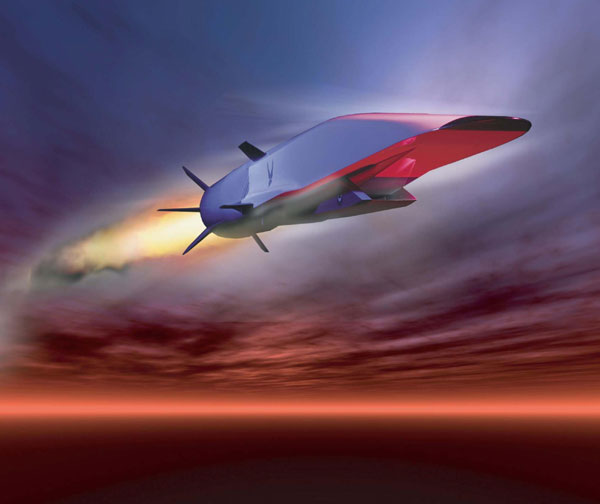
 |
|
An undated US Air Force handout graphic depicts the X-51A Waverider in flight. An unmanned experimental hypersonic military aircraft called the Waverider broke apart over the Pacific Ocean seconds into a test flight due to a faulty control fin, the US Air Force said on August 15, 2012. [Photo/Agencies] |
LOS ANGELES - An unmanned experimental aircraft designed to fly six times the speed of sound broke apart over the Pacific Ocean seconds into a military test flight due to a faulty control fin, the US Air Force said on Wednesday.
The problem with the fin on the craft known as the Waverider or X-51A was identified in a test flight on Tuesday, 16 seconds after a rocket booster on the remotely monitored craft was ignited to propel it forward, the Air Force said in a statement.
Fifteen seconds later, when the X-51A separated from the rocket booster, it lost control due to a "faulty control fin," the statement said. The 31 seconds of flight fell far short of the military's goal for the X-51A to fly for five minutes.
The aircraft broke apart immediately and fell into the Pacific Ocean near Point Mugu northwest of Los Angeles, said Daryl Mayer, a spokesman for the 88th Air Base Wing at Wright-Patterson Air Force Base in Ohio.
Even if the test had been a success, the aircraft would have crashed at the end of the flight in any case and was not considered retrievable.
The Waverider was designed to reach speeds of Mach 6 or above, six times the speed of sound and fast enough to zoom from New York to London in less than an hour. The military has its eye on using the Waverider program to develop missiles with non-nuclear explosives that could strike anywhere in the world within an hour, analysts said.
The cost of the experimental aircraft, which military officials said was dropped from a B-52 bomber before its rocket booster was ignited, has not been disclosed because many details of the program are classified.
The aircraft is known as the Waverider because it stays airborne, in part, with lift generated by the shock waves of its own flight. The Boeing Co's Phantom Works division performed design and assembly on the craft, the military said.
The fins on the rocket booster kept the aircraft on-course during the initial phase of the flight, despite the problem with the control fin on the X-51A itself, Mayer said.
A Boeing spokeswoman declined to comment on the test flight, citing an Air Force request to have all public communication come from the military.